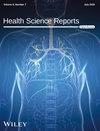A Prospective Open-Label Study of Tolerance and Effectiveness of Sequential Dermocosmetic Treatments Combining Poly-l-Lysine Biovectors With Vitamins A and C
Abstract
Background and Objectives
Atopic dermatitis (AD) is a common chronic inflammatory skin condition, affecting 15%–20% of children and up to 10% of adults. It has a significant impact on patients' quality of life and represents a considerable burden on healthcare systems. Management strategies aim to restore the skin barrier, reduce inflammation, and achieve physiological and homeostatic balance. This study evaluates the safety and efficacy of a new dermocosmetic formulation combining poly-l-lysine biovectors with vitamins A and C.
Methods
A single-arm, open-label study was conducted on 20 patients diagnosed with AD, including 14 women and 6 men aged between 24 and 63, with skin phototypes of Fitzpatrick I–VI. Treatment involved sequential application of poly-l-lysine G2/vitamin C in the morning and poly-l-lysine G3/vitamin A in the evening for 28 days, on the face, hands, and body. Outcomes were assessed using the Dermatology Life Quality Index (DLQI) and SCORAD scores. Additional assessments included a visual analog scale for pruritus and sleep disturbance, as well as patient self-report questionnaires on skin improvement and treatment satisfaction.
Results
The treatment was well-tolerated, with no adverse effects and no relapses of AD. After 28 days, patients showed a significant reduction in DLQI (−61.8%, Cohen's d = 1.20) and SCORAD (−41.8%, Cohen's d = 1.05) scores. Objective improvements included reductions in erythema (−50%), dryness (−60%), and pruritus (−50%).
Conclusion
This study demonstrates the potential of poly-l-lysine-based dermocosmetics combined with vitamins A and C to improve the symptoms and quality of life of patients suffering from AD. The formulations were well-tolerated and effective in restoring the skin barrier and reducing inflammation. Further large-scale controlled studies are needed to validate these results and explore long-term efficacy.

 求助内容:
求助内容: 应助结果提醒方式:
应助结果提醒方式:


